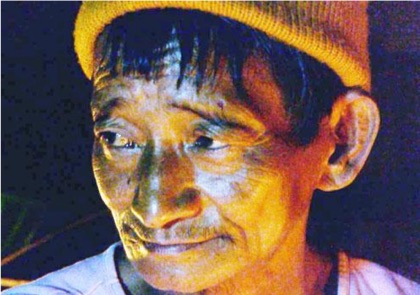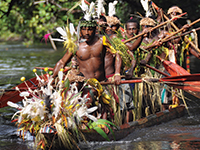This compelling documentary places Myanmar's Myitsone Dam in the context…
Blood and Gold

- Description
- Reviews
- Citation
- Cataloging
View on The Global Environmental Justice site
Curator
Jason A. Carbine, Associate Professor, C. Milo Connick Chair of Religious Studies, Whittier College
Why I selected this film
I chose this film for its insights into the complex political, economic,and environmental dynamics in northern Burma’s Kachin State, which borders China. The story was recorded by two American journalists,with support from the Pulitzer Center on Crisis Reporting. It was filmed on the battlefields; in the camps and refugee settlements, where tensof thousands of residents have fled from the fighting; and in the offices of military and government officials hoping to end the strife. As the Burmese military, the Kachin insurgents, and state-owned Chinese businesses compete for control over the region’s rich resources, a civil war drags on. The impact of the Chinese-funded Myitsone dam projectfigures prominently in this documentary, as it does in Dams, Drugs,and Democracy, which is also part of the GEJ collection.
Teacher's guide
Please see the teacher's guide for maps, background information, suggested subjects, questions and activities.
Synopsis
Blood and Gold: Inside Burma’s Hidden War examines the conflict in Burma’s Kachin State when it erupted in 2011 after a 17 year cease-fire. Filmmakers Jason Motlagh and Steve Sapienza interview Kachin military personnel, farmers, recruits, a journalist, a scholar, an aid worker, and a government official about the continuing war.The journalists also travel deep inside the war zone to film KIA headquarters near the border with China, military training sessions, active battlegrounds, and refugee camps in and around the KIA’s administrative capital of Laiza. Back in Yangon and the capital city of Naypyidaw, they document the international response to the opening up of Burma under its new president, Thein Sein, a former military general. The journalists find that the northern state’s rich resources, including a massive Chinese-funded hydroelectric project on the Irrawaddy River, are at the heart of the conflict in Kachin. The film concludes with a discussion of the KIA’s complicated relations with China.
The environmental justice focus of the film
Environmental justice (the recognition of human rights and the protection of the environment) is often stymied when entrenched
interests wage war in order to control natural resources. Blood and Gold offers many insights into the devastation and hardships at both
human and environmental levels.
Related Films
From Papua New Guinea to the tar sands of Alberta, Canada, native people…



